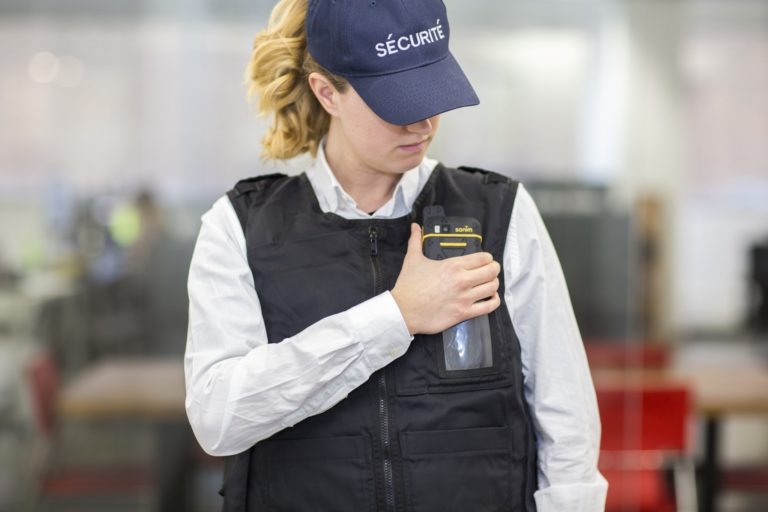Editor’s Note: This an update of a post originally published in June 2017
It was an opportunity to wow a big new client.
Years ago, the regional president of the security guard business I worked for announced a visit to our office. We jumped at the chance to have him attend one of our meetings with our new client.
In his opening remarks, he told our new client that we would make mistakes – in fact, that we would likely make various mistakes. I didn’t gasp out loud but it was close! He continued, saying that what matters is how we react, what controls we put in place to avoid human resource issues, and the QA measures we adopt to drive our success — my heart rate came back to normal!
At the end of the day, security guard management is based on people — and like it or not — we all make mistakes. But there are things we can do to make sure human error doesn’t impact on service quality and these actions are closely aligned to the Enterprise Security Risk Management (ESRM) approach. This approach places an emphasis on the role of security services as a source of value, rather than merely an unavoidable cost.
Here are my top tips for demonstrating value in the security guard management business:
#1: Define your security service offering
Whether your security business model is oriented to the low-margin space, or you’re focused on tailored, high-end services, you need to make a conscious choice that is reflected in your go-to-marketing strategy (see more in our whitepaper on how to differentiate your services from other companies).
Regardless of your decision, you need to make sure you understand your customer’s security objectives and make sure they are aligned with your offering. To measure your progress, adopt Key Performance Indicators (KPIs) that align with your strategy.
The goal is to set expectations against which your performance can be measured.
#2: Don’t forget that the service business is about delivery
Once you’ve set expectations, you need to focus on delivery and quality service. While people ultimately deliver your services, technology is a core tool and enabler that can enhance the customer and operator experience.
Technology is fundamental when it comes to driving efficiency, results, and quality, and demonstrating adherence to your service KPIs. In this way, you need to be able to track your operations and provide detailed information on your guards’ activities, and break down your incident reporting.
Being able to collect and analyze your operational data also has the bonus of supporting a proactive approach to security whereby you can outline preventative measures to help improve your customer’s security environment, and spot opportunities to expand your service offering.
#3: Support delivery by investing in training
Since security is a skill and requires knowledge, investing in training is critical. At least two types of training are necessary: pre-assignment and site-specific.
In markets where basic security training is a condition to licensing, pre-assignment training should focus on company processes as well as the key areas of basic training. Site-specific training should line up exactly with client expectations.
You also need to be able to record and monitor training and the expiration of relevant certifications such as first-aid accreditation or firearms licenses. Not only will this allow you to demonstrate service quality and SLA adherence, it will also support regulatory compliance for you and your customer.
#4: Find and retain good people
Your security personnel wear your uniform and represent you and your customer. When they leave a first impression, it must be positive.
When creating a process for selecting and screening new staff, it should be as painless as possible for both parties. Automation of certain steps can support your onboarding efforts and save you time, ensuring transparency and consistency.
A smooth recruitment process can help sell your brand to prospective security personnel. Likewise, ensuring smooth migration of payroll-ready data can help build your reputation for accurate, timely payroll among your talent pool.
Once onboard, it’s worth remembering that respected guards that are properly trained, equipped, paid, and scheduled typically stay on for longer.
#5: Get paperwork right first time
Your contract and invoicing paperwork connects your frontline services with your business, and ultimately you to your customer. You don’t want to let tardy or inaccurate paperwork tarnish a good business relationship so make sure your paperwork is handled efficiently and that you only have to enter data once.
Accurate invoices with appropriate backup will make your billing processes smoother and allow you to get paid faster.
#6: Align your security service KPIs with your customer’s business goals
An ESRM approach to security guard services places security within the context of the wider organization in which you operate. By getting insight into your customer’s overall business objectives, you can pinpoint the security actions that could help support your customer in achieving their goals.
Understanding your customer’s service expectations will further help you tailor your operations, help you agree on a scope and adopt a service level agreement that allows you to report on agreed-upon metrics and KPIs. Do this regularly and avoid unpleasant surprises.
Here are a few examples of KPIs: number of patrols executed, incidents resolved, individuals screened, visits by manager/supervisor, shifts delivered vs. open posts, etc.
Become a business partner
Push the boundaries of security and challenge perceptions of the value that security services can bring. Don’t settle for the status quo and demonstrate to your customers that you understand their needs through a forward-looking, proactive security service.
When your customers understand how you can help secure what’s important to them and contribute to their business goals, you’ll find yourself acting as a true business partner with a seat at the table.


